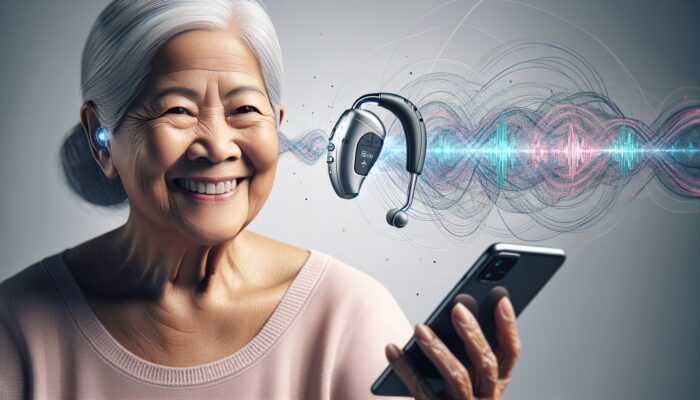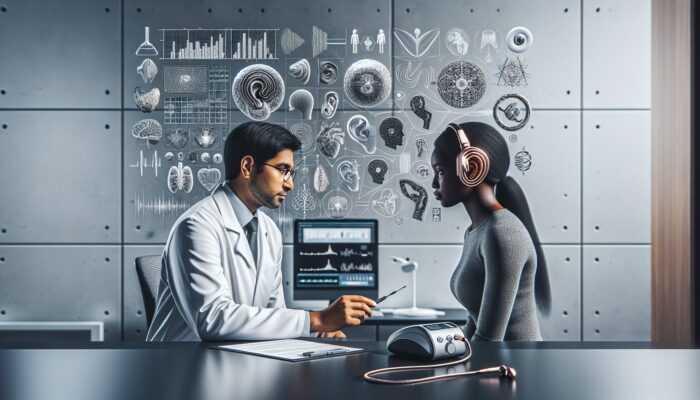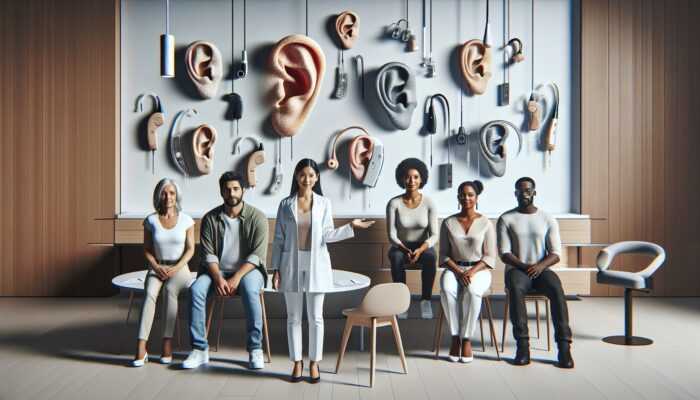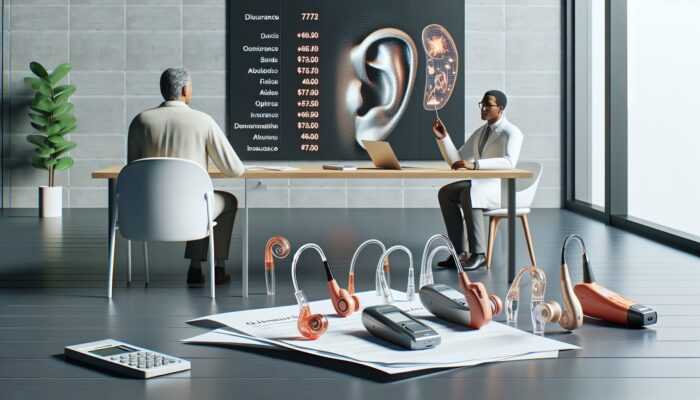Optimising Your Hearing Aid Experience for Maximum Benefit
Assessing Essential Performance Indicators in Hearing Aids

Choosing the perfect hearing aid can be a daunting task given the plethora of options available, each boasting unique features and benefits. Delving into reviews can illuminate the performance indicators that are truly essential: sound quality, battery life, and user comfort. For instance, a review may highlight how a particular model shines in delivering sound clarity in demanding settings like busy urban streets or crowded eateries, thus facilitating enjoyable conversations without the usual strain.
The importance of battery life is paramount, as numerous reviews accentuate this vital feature. A hearing aid that boasts an enduring battery empowers users to relish uninterrupted audio experiences throughout the day, significantly improving convenience and overall satisfaction. Comfort is equally crucial; if a hearing aid is uncomfortable to wear, users are unlikely to keep it on regularly. Real-life testimonials regarding comfort levels can aid potential buyers in identifying products that offer personalised fits and adaptable options to suit their preferences.
Moreover, detailed hearing aid reviews frequently examine technical specifications, making it easier to compare different models effectively. For example, one review may indicate that a certain model excels in noise cancellation, while another may be praised for its Bluetooth connectivity, allowing for seamless pairing with smartphones. This comparative insight empowers users to select devices that best align with their lifestyle demands and personal preferences.
Valuable Insights from Hearing Aid Users’ Experiences
There is no substitute for the power of personal narratives. User experiences shared in hearing aid reviews provide invaluable insights into how devices function in diverse scenarios. For instance, an individual might recount their experience with a hearing aid while partaking in outdoor activities, such as hiking or attending live concerts. These stories not only emphasise specific features but also demonstrate how well the device adjusts to varying environments, showcasing its adaptability and reliability.
Consider a user who regularly attends family gatherings. They might describe how their hearing aid adeptly filtered out distracting background noise, enabling them to engage in rich conversations without straining to hear. Such insights are essential as they equip prospective buyers with an understanding of how different models operate in real-world situations, thereby simplifying their decision-making process.
Furthermore, user experiences can unearth potential problems that may not be immediately obvious. For example, a review might reveal that a specific model encounters connectivity issues during phone calls, which is critical information for anyone who relies on phone communication for work or personal interactions. By analysing shared experiences, users can make educated choices that enhance their overall quality of life, ensuring they choose devices tailored to their specific requirements.
Conducting a Comparative Analysis for Smart Decision-Making
Navigating the extensive selection of hearing aids can be overwhelming, but comparative analyses found in reviews simplify this decision-making journey. By facilitating side-by-side assessments, reviews enable users to evaluate different models based on key factors such as price, features, and user ratings, leading to a more transparent selection process.
For instance, one review may highlight that Model A offers advanced sound processing capabilities but comes with a higher price tag, whilst Model B provides decent sound quality at a more affordable price point. Users can weigh the pros and cons of each model, tailoring their choices to suit their unique hearing requirements and financial considerations.
In addition, comparative analyses often incorporate user ratings and professional recommendations, providing a well-rounded view of each device. A model that consistently receives accolades for its comfort and sound quality, despite some critiques regarding battery life, might still be the best choice for someone prioritising those particular features. Therefore, the ability to compare various models equips users with the knowledge necessary to make confident, informed decisions that cater to their auditory needs and budget.
Discovering How Technological Innovations are Changing Hearing Aids

The realm of hearing aids is rapidly evolving, as cutting-edge innovations redefine user experiences and device effectiveness. Reviews serve as an invaluable resource for keeping users informed about the latest technological advancements, such as state-of-the-art noise cancellation features, Bluetooth connectivity, and even the integration of artificial intelligence capabilities.
Contemporary hearing aids are engineered to adjust sound according to the user’s surroundings, ensuring clear hearing whether in a serene library or a vibrant café. Reviews often provide in-depth discussions regarding these features, illustrating how they enhance the overall user experience. For instance, a review might showcase how a specific model uses machine learning algorithms to automatically modify sound settings in response to ambient noise levels, resulting in a highly personalised experience for the user.
Additionally, another remarkable advancement includes the incorporation of Bluetooth technology, which enables users to connect their hearing aids directly to smartphones or other devices. This functionality, frequently highlighted in user reviews, allows for seamless streaming of music, phone calls, and even television audio directly into the hearing aids, greatly enriching the user experience and convenience.
Staying informed about these advancements through reviews not only aids users in identifying what features to seek in new devices but also helps them determine the optimal time for an upgrade, ensuring they enjoy the latest innovations in hearing technology.
Utilising Expert Recommendations for Optimal Hearing Aid Selection
Professional recommendations are instrumental in the journey of selecting the appropriate hearing aids. Audiologists and hearing specialists offer expert guidance based on individual evaluations, assisting users in identifying devices that are tailored to their unique requirements. Reviews that incorporate these professional insights are particularly beneficial, adding a layer of credibility to user testimonials and steering users towards optimal choices.
For instance, an audiologist might suggest a particular model renowned for its superior sound quality in complex listening environments, such as restaurants or social gatherings. This kind of professional insight can lead users to models that may not be the most popular but offer exceptional functionality for their specific circumstances and hearing needs.
Moreover, reviews that include expert opinions often delve into the importance of various features, such as directional microphones or feedback cancellation, explaining how these technologies can significantly enhance user experiences. By understanding what professionals consider essential, users can make informed choices that align seamlessly with their hearing requirements.
Hearing aids are not just devices; they are crucial tools for enhancing communication and enriching quality of life. Professional recommendations found in reviews act as a guiding compass, directing users toward the most effective solutions for their auditory challenges.
Simplifying the Decision-Making Process for Hearing Aids
Comprehensive Feature Evaluation for Informed Hearing Aid Choices

Deciding on the most suitable hearing aid can seem overwhelming, particularly with the extensive range of features available. In-depth reviews offer crucial insights into which features may best serve individual needs and preferences. For instance, a review might underscore the benefits of multiple listening programs, allowing users to switch between settings tailored for diverse environments, whether they are quiet or noisy.
Specific features, including volume control, wireless connectivity, and app compatibility, can significantly impact a user’s overall experience. A review that elucidates how easy it is to adjust these settings enables users to visualise their potential interactions with the device. For example, users may prefer a model that is compatible with a smartphone app, allowing for immediate adjustments and enabling them to stay engaged in conversations without fumbling with physical controls.
Additionally, recognising the significance of features such as battery life and durability can steer users in their selections. A review might highlight a specific model that offers a rechargeable option with extended battery life, particularly advantageous for users who are consistently on the go. By discerning which features are essential versus those that are merely desirable, users can streamline their decision-making process, ultimately leading to greater satisfaction.
In essence, reviews that provide thorough evaluations of features empower users to make choices that enhance both their hearing capabilities and overall lifestyle.
Conducting a Cost-Benefit Analysis for Informed Hearing Aid Investments
Cost considerations often play a pivotal role when selecting hearing aids, making a meticulous cost-benefit analysis essential. Reviews that discuss the value proposition offered by various models can significantly aid users in their budgeting efforts. For example, a review may contrast a high-end model with advanced features against a more economical version, detailing what users may gain or relinquish by choosing one over the other.
When evaluating cost, users must consider not only the initial purchase price but also potential long-term expenses such as maintenance, battery replacements, and insurance coverage. An insightful review could underscore models that may have a higher upfront cost but yield savings over time due to lower maintenance needs or superior battery efficiency.
Furthermore, user reviews frequently share personal experiences regarding overall satisfaction and effectiveness at various price points, assisting prospective buyers in determining whether a particular investment is warranted. Insights from users who have lived with the devices offer new buyers realistic expectations concerning performance, facilitating more informed financial decisions.
By providing a clear cost-benefit analysis, reviews assist users in thoughtfully weighing their options, ensuring they invest in a hearing aid that meets both their auditory needs and financial constraints.
Evaluating Brand Reliability for Confident Hearing Aid Selections
Brand reliability is a crucial consideration for many consumers when selecting hearing aids. Reviews serve as an invaluable resource for gaining insights into the reputation and customer service of various brands. Users frequently share their experiences regarding the durability and reliability of their devices, which can substantially influence a prospective buyer’s choice.
For example, a review might reveal that a particular brand is renowned for its exceptional customer service, guiding users towards models from companies that provide not only quality products but also ongoing support. Customers often appreciate brands that maintain communication post-purchase, whether through routine follow-ups or accessible service representatives for troubleshooting.
Furthermore, reviews can highlight common issues faced by users of specific brands, such as software glitches or inadequate battery performance. By reading about others’ experiences, potential buyers can proactively steer clear of brands that have consistently received negative feedback or unresolved issues, ensuring a more dependable purchase.
In summary, understanding brand reliability through user reviews empowers buyers to select products from manufacturers that not only deliver quality but also honour their commitments, resulting in an enhanced overall hearing aid experience.
Improving User Satisfaction with Hearing Aids
Setting Realistic Expectations for Hearing Aid Performance
One of the most significant barriers to user satisfaction with hearing aids stems from unrealistic expectations. Reviews play a crucial role in establishing these expectations, guiding users toward a more informed understanding of what modern hearing aids can achieve. For example, a user might read about the benefits of noise cancellation technology, yet may not fully comprehend that it won’t entirely eliminate all background sounds in a lively setting.
User reviews frequently discuss the complexities of hearing aid performance, explaining that while many models enhance sound clarity, they may not be able to replicate natural hearing completely. By sharing their journeys, users can aid others in understanding the adjustment period often necessary to acclimatise to new devices, ensuring higher satisfaction levels.
Moreover, reviews that include long-term user experiences provide insights into what users can expect as they adapt to their devices. For instance, a user may share how their perception of sound evolved over time and how they learned to navigate situations that initially seemed challenging. Such insights help potential buyers set realistic expectations, paving the way for greater satisfaction and acceptance of their devices.
Ultimately, well-informed users are more likely to feel content with their hearing aids, embracing their devices as invaluable tools for improved communication and engagement rather than viewing them as limitations.
Practical Troubleshooting Tips from User Reviews
User reviews often prove to be a treasure trove of troubleshooting tips for addressing common issues encountered by hearing aid users. Whether it’s tackling feedback, adjusting volume settings, or managing connectivity problems, real-world insights can streamline the troubleshooting process for newcomers to the technology.
For instance, a user might share a simple solution for a prevalent buzzing sound, detailing how adjusting the microphone settings effectively resolved their issue. These shared experiences can save users time and frustration, empowering them to address problems independently without waiting for professional assistance.
Moreover, reviews can provide guidance on preventive measures to avoid common pitfalls. Users might discuss the importance of regular maintenance, such as cleaning and properly storing hearing aids to extend their lifespan. Tips on battery management, connectivity troubleshooting, and software updates can all be invaluable for users keen to ensure optimal performance from their devices.
This collective knowledge found within user reviews fosters a sense of community, where users can learn from each other’s challenges and successes, significantly enhancing their overall experience with hearing aids.
Insights on Personalising Hearing Aid Use for Optimal Performance
Every hearing aid user is unique, and personalisation can greatly enhance the usability and functionality of their devices. Reviews frequently provide insights into how others have customised their hearing aids to meet their specific needs. For instance, a user might share how they adjusted their device’s settings to optimise sound for both quiet home environments and bustling public spaces, ensuring a tailored listening experience.
Feedback from experienced users can offer valuable guidance on various customisation options available, from modifying sound profiles to utilising different listening modes. Such insights empower new users to take control of their hearing aids, enabling them to fine-tune settings for specific environments like workplaces, social settings, or personal time.
Additionally, users may recommend compatible accessories or applications that further enhance the hearing experience. For example, some might discuss how specific phone applications can help adjust hearing aid settings or even serve as remote controls, simplifying the user experience and making adjustments more convenient.
By learning from others’ customisation insights, users can optimise their hearing aids for improved performance, ultimately leading to greater day-to-day satisfaction and effectiveness.
Accessing Expert Insights for Better Hearing Aid Decisions
Leveraging Professional Reviews for Informed Hearing Aid Choices
The credibility of professional reviews in the realm of hearing aids is invaluable. These insights, often authored by audiologists or hearing specialists, provide in-depth analyses and recommendations that enhance user decision-making. Expert insights validate user experiences while offering additional context regarding the technical aspects of various models, ensuring users are well-informed.
For instance, a professional review may elaborate on the benefits of certain features—such as a hearing aid’s ability to automatically adjust settings based on the environment—emphasising how these advancements contribute to an improved user experience. Readers can trust these insights, knowing that the authors possess specialised knowledge and experience in the field, instilling confidence in their purchasing decisions.
Moreover, professional reviews often include comparative data that can be invaluable for users weighing their options. A review might provide statistical performance metrics, showcasing how one model outperforms others in terms of sound clarity or battery life. Armed with this information, users can make more informed choices, aligning their purchases with their specific needs and preferences.
In essence, professional reviews amplify user knowledge and confidence, guiding them toward hearing aids that will provide the best auditory experience tailored to their unique requirements.
Staying Updated on the Latest Technological Innovations
Being informed about technological advancements is crucial for hearing aid users seeking to maximise their auditory experience. Reviews frequently highlight emerging technologies that can significantly enhance device effectiveness, such as machine learning capabilities that adapt sound settings based on user behaviour and environmental changes.
For example, a review might discuss the integration of artificial intelligence in contemporary hearing aids, which can learn a user’s preferences over time. This adaptability allows for a more personalised hearing experience, where the device automatically adjusts its settings to suit different listening environments and user needs.
Additionally, advancements such as telehealth services enable users to receive remote adjustments and consultations, enhancing convenience and accessibility. Reviews that explore these innovations not only inform users about the latest features but also promote awareness of how technology can further bridge the gap in hearing accessibility, making it easier for individuals to access the support they need.
By staying updated on these advancements through reviews, users empower themselves to select devices that offer cutting-edge features, ensuring they enjoy the finest auditory experience possible.
Understanding the Long-Term Performance of Hearing Aids
Grasping the long-term performance of hearing aids is critical for users as they consider their investments. Reviews from experienced users can provide valuable insights into the durability and reliability of specific models, helping prospective buyers make informed decisions.
For instance, a user might share their experience with a particular model after several years of usage, detailing how it has endured daily wear and tear. Such information is instrumental for buyers seeking longevity in their devices, highlighting which models may provide better value over time based on their performance and resilience.
Moreover, expert reviews often include forecasts about the longevity of hearing aids based on their construction and technology. Users can gain insights into potential maintenance needs, battery replacement schedules, and the expected lifespan of various components, allowing them to prepare for any future investments in their hearing health.
Ultimately, understanding long-term performance through user and expert reviews allows buyers to make educated choices, investing in hearing aids that deliver enduring satisfaction and reliability.
Navigating the Hearing Aid Market with Confidence
Exploring the Variety of Hearing Aids for Tailored Selections
The hearing aid market is extensive and diverse, necessitating that users navigate through the myriad of options available. Reviews provide a vital compass, guiding users to the most suitable devices while highlighting the array of choices at their disposal.
For example, a review may classify hearing aids by style—such as completely-in-canal, behind-the-ear, or receiver-in-canal—allowing users to consider their aesthetic and functional preferences. This variety empowers users to select a model that seamlessly integrates into their lifestyle while addressing their unique auditory needs.
Additionally, discussions regarding product variety often delve into niche markets, such as hearing aids specifically designed for active users or those with unique hearing loss profiles. By covering this spectrum, reviews ensure that every potential buyer finds a model that aligns with their lifestyle choices and hearing requirements.
In conclusion, understanding the product variety available through comprehensive reviews equips users with the knowledge necessary to make choices that best suit their individual needs and preferences.
Spotting the Latest Trends in Hearing Aid Technology
Remaining aware of the latest trends in the hearing aid market is vital for making informed purchasing decisions. Reviews represent an excellent resource for identifying emerging trends, such as the shift towards more discreet designs or the increasing focus on connectivity features.
For instance, many contemporary hearing aids now incorporate smartphone compatibility, allowing users to control settings directly from their devices. Reviews detailing these trends inform users about which features are becoming standard, positioning them at the forefront of advancements in hearing technology.
Additionally, trends in sustainability and eco-friendliness are gaining traction, with some manufacturers focusing on developing hearing aids made from recycled materials or those that are energy-efficient. Reviews that highlight these movements provide users with options that align with their values, appealing to those who prioritise environmentally responsible products and practices.
By staying informed about the latest trends through reviews, users can ensure they select hearing aids that not only meet their technical needs but also reflect their lifestyles and values, contributing to a more satisfying purchasing experience.
Avoiding Common Mistakes When Purchasing Hearing Aids
Navigating the hearing aid market can be fraught with pitfalls, but reviews offer essential guidance to help avoid common issues. Users frequently share their experiences regarding subpar models or brands, assisting potential buyers in steering clear of products with known problems.
For example, a review might outline specific challenges encountered with a particular model, such as frequent connectivity issues or hardware malfunctions. By learning from these experiences, users can make informed decisions, opting for models with a proven track record of reliability and satisfaction.
Additionally, reviews can highlight common red flags to watch for when making a purchase, such as overly aggressive marketing tactics or products that lack substantial user feedback. This insight empowers consumers to make smarter, safer purchasing decisions that prioritise quality and reliability.
Ultimately, by leveraging the collective experiences shared in reviews, users can navigate the market more confidently, avoiding the pitfalls that could lead to dissatisfaction with their hearing aids.
Conducting Price Comparisons for Best Value in Hearing Aids
Price is a significant consideration for many consumers when selecting hearing aids, and reviews often provide essential insights into cost-effectiveness. Users benefit from price comparisons that break down the features and advantages of various models, allowing them to determine where to get the most value for their investment.
For example, a review may highlight a premium model with advanced features like machine learning capabilities and seamless connectivity, showcasing its benefits while also presenting options at lower price points that offer essential features for budget-conscious users.
Moreover, reviews that include information about warranty and service plans can inform users about potential long-term costs, ensuring they understand the total investment required for each model. By comparing prices and features, users can make decisions that align with both their needs and budgetary constraints.
Through careful price comparisons offered in reviews, users can make informed choices that maximise their investment in hearing technology, ensuring they receive the quality they desire without overspending.
Enhancing Accessibility to Hearing Health Resources
Utilising Online Tools for Informed Hearing Aid Decisions
The rise of online resources has dramatically transformed how users access information about hearing aids. Reviews are readily available on various platforms, providing users with the opportunity to gather insights anytime, anywhere. This accessibility is especially beneficial for individuals who may have mobility constraints or those residing in remote areas with limited access to audiologists or hearing specialists.
Moreover, online reviews often feature a wealth of information that can be easily searched and navigated, allowing users to find specific data about the models they are considering. For example, a search for “best hearing aids for noisy environments” can yield targeted reviews, saving users time and effort in their decision-making process.
Additionally, many review platforms now incorporate user-generated content, enabling dynamic discussions where potential buyers can ask questions and receive real-time answers. This interactive element enhances the accessibility of information, fostering a supportive community among users who can benefit from shared experiences.
Ultimately, the abundance of online resources equips individuals with the knowledge they need to make informed decisions about their hearing health, enhancing their overall accessibility to vital information and support.
Valuing Varied Perspectives in Hearing Aid Reviews
Diverse perspectives are invaluable when evaluating hearing aids, and reviews provide a platform for users to share their unique experiences. Each individual’s journey with hearing loss is different, and reviews that encompass a wide array of voices help paint a richer picture of how various models perform in different scenarios.
For instance, one user may focus on how well a device works for mild hearing loss in calm environments, while another may discuss its efficacy in managing profound loss amidst distracting background noise. These varied experiences offer insights that a single narrative may not cover, ensuring potential buyers understand how models might perform in a range of contexts.
Additionally, reviews from individuals of different ages and backgrounds can highlight how lifestyle factors influence hearing aid selection. For example, younger users might prioritise Bluetooth connectivity and style, while older users may focus more on ease of use and comfort. By considering these diverse perspectives, potential buyers can make decisions that align with their specific needs and preferences, ultimately leading to greater satisfaction.
In summary, the diversity of perspectives found in reviews enriches the decision-making process, allowing users to consider a broader range of factors when selecting their hearing aids.
Building Community Support Through Review Platforms
Review platforms often foster communities where users can seek advice, share experiences, and provide support to one another. This community aspect is invaluable for individuals navigating the challenges associated with hearing loss, offering a sense of belonging and understanding that can significantly enhance their journeys.
For instance, users can engage in discussions about troubleshooting common issues, recommend specific models, or share tips on how to maximise the effectiveness of their hearing aids. Such interactions not only enrich the user experience but also empower individuals to take control of their hearing health, fostering a sense of agency and confidence.
Moreover, community support can help mitigate the feelings of isolation often experienced by those with hearing loss. By connecting with others who understand their challenges and triumphs, users can cultivate a support network that encourages them to embrace their devices and improve their overall quality of life.
Ultimately, the community support found within review platforms enhances the user experience, fostering a sense of connection and empowerment that can lead to increased satisfaction and engagement with their hearing aids.
Promoting Enhanced Hearing Health for Everyone
Encouraging Regular Use of Hearing Aids for Improved Well-Being
Positive reviews can serve as powerful motivators for users to wear their hearing aids consistently, significantly enhancing their hearing health and overall quality of life. When potential buyers read firsthand accounts of how devices have transformed others’ lives—enabling better communication, socialisation, and well-being—they may feel inspired to commit to using their own devices regularly.
For example, a user might share how wearing their hearing aid boosted their confidence in social settings, allowing them to engage in conversations they previously found overwhelming. Such testimonials highlight the tangible benefits of consistent usage, urging prospective buyers to fully embrace their devices as essential tools for connection.
Moreover, reviews that discuss the consequences of neglecting to use hearing aids—such as increased social isolation or cognitive decline—can further emphasise the importance of regular use. By illustrating the negative impacts of disregarding hearing health, these reviews motivate users to prioritise their hearing aids, enhancing their overall quality of life.
In essence, encouraging consistent use through positive reviews fosters a culture of acceptance and commitment to hearing health, ensuring users maximise the benefits their devices offer and maintain an active, engaged lifestyle.
Identifying Personal Hearing Needs Through Reviews
Hearing aid reviews often play a pivotal role in helping users identify their specific auditory needs. By reading about the experiences of others, prospective buyers can gain a clearer understanding of the features and functionalities that will best address their unique hearing challenges.
For instance, a user may discover through reviews that they require a model excelling in noise cancellation due to frequent attendance at concerts or social events. By learning from the experiences of others, individuals can more accurately pinpoint their needs, ensuring they select devices that truly align with their lifestyles and hearing environments.
Moreover, reviews can clarify the differences between various types of hearing loss, guiding users toward models that cater to their specific conditions. Whether dealing with mild, moderate, or profound hearing loss, understanding these distinctions can help users make more informed choices that suit their auditory profiles.
In summary, hearing aid reviews serve as invaluable tools for identifying individual needs, equipping users with the knowledge necessary to choose the right devices for their auditory health.
Raising Awareness About the Importance of Hearing Health
Increased visibility of hearing aid reviews can significantly raise awareness about the importance of hearing health and the role of hearing aids in enhancing quality of life. As users share their experiences, they contribute to a growing conversation about hearing loss and the various solutions available to those affected.
For example, a review detailing the transformative effects of a hearing aid can encourage others who may be hesitant about their own hearing loss to seek assistance. By spotlighting the positive impact of hearing aids, these narratives help destigmatise the use of such devices, fostering a culture of acceptance and understanding within society.
Additionally, reviews can serve as educational resources, providing insights into common hearing issues, the importance of early intervention, and the latest advancements in hearing technology. This educational aspect empowers users to take proactive steps toward maintaining their hearing health, reinforcing the importance of seeking help and utilising available resources.
Ultimately, raising awareness through user reviews promotes a broader understanding of hearing health, encouraging individuals to prioritise their auditory well-being and take action in support of it.
Educating Users on Hearing Health and Device Functionality
Providing educational content in reviews can enhance users’ understanding of hearing health and device functionality, empowering them to make informed decisions. Reviews that explore the science behind hearing aids—explaining how they work, the technology involved, and the benefits they offer—can demystify the purchasing process for potential buyers, making it more approachable.
For instance, a review might break down the components of a hearing aid, explaining how sound is processed and amplified. This level of detail equips users with the knowledge to understand the features they should prioritise based on their unique hearing needs and preferences.
Moreover, educational content can address common misconceptions surrounding hearing aids, such as the belief that they are exclusively for older individuals. By clarifying these myths and providing relevant information, reviews can help shift societal perceptions and encourage users of all ages to explore their hearing options, ultimately enhancing awareness and acceptance.
In essence, education is a powerful tool found in reviews that empowers users to take charge of their hearing health, ensuring they make informed choices that improve their auditory experiences and overall well-being.
Facilitating Access to Hearing Health Resources
Hearing aid reviews can guide users to resources and services that enhance access to hearing health care and devices. By sharing information on where to find reliable audiologists, clinics, and online retailers, these reviews simplify the search process for potential buyers, ensuring they can find the support they need.
For example, a review might recommend specific audiology practices recognised for their comprehensive evaluations and exceptional customer service, ensuring users receive the assistance they require throughout their hearing journey. Additionally, reviews may highlight telehealth options, which provide remote consultations, making it easier for individuals to access professional advice without geographical constraints.
Moreover, reviews can also detail financial assistance programmes or insurance coverage options, helping users navigate the complexities of funding their hearing aids. By shedding light on available resources and services, reviews promote equitable access to hearing health care, ensuring that users can obtain the support they need without undue financial burden.
In conclusion, facilitating access through informative reviews ensures that users can find the solutions they need, empowering them to take control of their hearing health journey and make informed decisions about their auditory well-being.
Frequently Asked Questions Regarding Hearing Aids
What are hearing aids?
Hearing aids are compact electronic devices worn in or behind the ear that amplify sound for individuals experiencing hearing loss, enhancing their ability to communicate and engage in daily activities effectively.
Why should I read hearing aid reviews?
Reading hearing aid reviews provides insights into product performance, user experiences, and expert recommendations, empowering you to make informed choices that best suit your hearing needs and preferences.
How can hearing aid reviews assist me in finding the right model?
Hearing aid reviews provide comparisons of different models, highlight essential features, and offer real-world user experiences, simplifying the process of identifying which device may be the best fit for your individual preferences and lifestyle.
What should I search for in hearing aid reviews?
Look for reviews that discuss sound quality, battery life, user comfort, and specific features that cater to your hearing loss needs. Additionally, consider insights from both users and professionals for a well-rounded perspective.
Are there different types of hearing aids available?
Yes, there are various types of hearing aids, including behind-the-ear (BTE), in-the-ear (ITE), and completely-in-canal (CIC), each designed to suit different levels of hearing loss and user preferences.
What are some common problems encountered with hearing aids?
Common issues may include connectivity problems, feedback sounds, battery life concerns, and discomfort. Reviews often provide troubleshooting tips to address these concerns effectively.
How frequently should I replace my hearing aids?
Hearing aids typically have a lifespan of 3 to 7 years, depending on usage and technological advancements. Regular reviews can help you determine when it might be time for an upgrade based on performance and user satisfaction.
Can hearing aids connect to smartphones?
Many modern hearing aids feature Bluetooth connectivity, allowing users to stream audio directly from smartphones, enhancing communication and entertainment experiences.
What is the significance of professional recommendations in hearing aids?
Professional recommendations provide valuable insights based on individual assessments, helping users select devices tailored to their specific hearing needs and ensuring optimal performance and satisfaction.
Where can I find credible hearing aid reviews?
Credible hearing aid reviews can be found on reputable websites, audiology forums, and dedicated review platforms that aggregate user and expert feedback to guide potential buyers effectively.
Explore our world on X!
The post Hearing Aid Reviews: Your Essential Guide to Choosing Wisely appeared first on The Microsuction Ear Wax Removal Network.
The post Hearing Aid Reviews: Your Essential Guide to Choosing Wisely appeared first on Healthcare Marketing Service.











